 This latest release from the long-running duo of Jonnine Standish and Nigel Yang is quite a bombshell, as Rhinestones was "inspired by a recent infatuation with 'eerie and gothic country music.'" To my ears, HTRK drawing inspiration from classic country heartache is already a winning formula right out of the gate, yet Rhinestones is even better than I might have hoped, as the Melbourne-based pair have spiced that new direction up further by filtering it through a "narcotic, nocturnal lens" in order to "map enigmatic badlands of strung out beauty" (count me in!). In less poetic terms, that means that Rhinestones is full of acoustic guitars, heartbreak, and half-sultry/half-ghostly vocal melodies and that every single one of these nine songs attain some degree of greatness. While yet another excellent HTRK album is hardly unexpected territory, I was nevertheless legitimately floored by how masterfully Standish and Yang executed this new vision, as Rhinestones is a beautifully stark, sensual, and effortlessly psychedelic tour de force that somehow also fitfully evokes great '80s pop in the vein of Pat Benatar. That is quite an impressive feat. This album will deservedly be all over "best of 2021" lists next month.
This latest release from the long-running duo of Jonnine Standish and Nigel Yang is quite a bombshell, as Rhinestones was "inspired by a recent infatuation with 'eerie and gothic country music.'" To my ears, HTRK drawing inspiration from classic country heartache is already a winning formula right out of the gate, yet Rhinestones is even better than I might have hoped, as the Melbourne-based pair have spiced that new direction up further by filtering it through a "narcotic, nocturnal lens" in order to "map enigmatic badlands of strung out beauty" (count me in!). In less poetic terms, that means that Rhinestones is full of acoustic guitars, heartbreak, and half-sultry/half-ghostly vocal melodies and that every single one of these nine songs attain some degree of greatness. While yet another excellent HTRK album is hardly unexpected territory, I was nevertheless legitimately floored by how masterfully Standish and Yang executed this new vision, as Rhinestones is a beautifully stark, sensual, and effortlessly psychedelic tour de force that somehow also fitfully evokes great '80s pop in the vein of Pat Benatar. That is quite an impressive feat. This album will deservedly be all over "best of 2021" lists next month.
Heavy Machinery/N&J Blueberries
This album is an extremely impressive example of how an absolutely gorgeous album can result from a very stark and simple palette, as Rhinestones is basically just an acoustic guitar, an occasional drum machine click, Standish's breathily sensuous voice, some great songs, and plenty of unerring instincts. While the whole album is wonderful, it starts to become something transcendent at the end of the second piece. "Valentina" initially sounds like a lovesick folkie got the hypnagogic David Lynch/Julee Cruise treatment, but it ends in unexpectedly heavy fashion, as the final line "can you remove it from my finger?" locks into a haunting spiral of looping repetition. That cool surprise then happily seques into a three-song run of absolutely killer songs. On "Sunlight Feels like Bee Stings," what initially sounds like a sadness-soaked breakup song quickly blossoms into something darkly sexual and swirling with understatedly beautiful ripples of echoing psych guitar. The following "Siren Song," on the other hand, only lasts a mere 49 seconds, yet every single one of those seconds rules, as Yang unleashes a phantasmagoric reverie of hollow, wobbly chords and string scrapes augmented with little more than murmured vocals and a slow rhythm of finger snaps.
"Fast Friend" is another quiet masterpiece of psych guitar, approximating a sultry, bleary Pat Benatar cover with a slinky drum machine pulse and host of painterly hallucinatory touches. Some artists make great psychedelia with cool layering and inspired juxtapositions, but Yang is the sort that can make just a single note or chord sound amazing and I am very much into it. The rest of the album is rounded out by a classic HTRK-style single "Real Headfuck" and a few seemingly lesser pieces that are ultimately elevated by great outros. Yang and Standish are truly in peak form on this album, as the vocals seductively dance over a simmering array of cool backdrops and every last hand clap or string scrape is executed with flawless timing and maximum impact. If there is any caveat with Rhinestones at all, it is only that it might feel a bit too melancholy for some, but I found these songs to be a lot like the old joke about New England weather: if a song seems unmemorable or oppressively sad at first, odds are quite strong that something cool and unexpected is about to dramatically change that trajectory for the better. This is a hell of an album.
Samples can be found here.



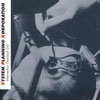
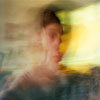
 I have historically been quite fond of Barn Owl's work, but I sometimes find their extreme malleability a bit frustrating.  This collaboration with Ellen Fullman and Theresa Wong takes that trait a bit further than usual, as there is very little here that is immediately identifiable as "Barn Owl."  Perversely, though, that works just fine–in fact, all of the artists involved are almost completely and unrecognizably subsumed by the rich and vibrant drone music they've created.  This collaboration is so perfect and seamless that it sounds like a completely new band rather than the some of its parts.
I have historically been quite fond of Barn Owl's work, but I sometimes find their extreme malleability a bit frustrating.  This collaboration with Ellen Fullman and Theresa Wong takes that trait a bit further than usual, as there is very little here that is immediately identifiable as "Barn Owl."  Perversely, though, that works just fine–in fact, all of the artists involved are almost completely and unrecognizably subsumed by the rich and vibrant drone music they've created.  This collaboration is so perfect and seamless that it sounds like a completely new band rather than the some of its parts.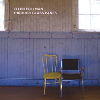 Fullman and her Long String Instrument have been quite active with collaborations, commissions, and residencies over the last few years, but this album is her debut full-length as a solo artist.  On one hand, that is quite remarkable, as she began working with her self-invented instrument of choice just about three decades ago.  On the other hand, the wait makes perfect sense, as the instrument's limited range and versatility make it a very difficult foundation to base an entire album upon.
Fullman and her Long String Instrument have been quite active with collaborations, commissions, and residencies over the last few years, but this album is her debut full-length as a solo artist.  On one hand, that is quite remarkable, as she began working with her self-invented instrument of choice just about three decades ago.  On the other hand, the wait makes perfect sense, as the instrument's limited range and versatility make it a very difficult foundation to base an entire album upon. This latest release from the long-running duo of Jonnine Standish and Nigel Yang is quite a bombshell, as Rhinestones was "inspired by a recent infatuation with 'eerie and gothic country music.'" To my ears, HTRK drawing inspiration from classic country heartache is already a winning formula right out of the gate, yet Rhinestones is even better than I might have hoped, as the Melbourne-based pair have spiced that new direction up further by filtering it through a "narcotic, nocturnal lens" in order to "map enigmatic badlands of strung out beauty" (count me in!). In less poetic terms, that means that Rhinestones is full of acoustic guitars, heartbreak, and half-sultry/half-ghostly vocal melodies and that every single one of these nine songs attain some degree of greatness. While yet another excellent HTRK album is hardly unexpected territory, I was nevertheless legitimately floored by how masterfully Standish and Yang executed this new vision, as Rhinestones is a beautifully stark, sensual, and effortlessly psychedelic tour de force that somehow also fitfully evokes great '80s pop in the vein of Pat Benatar. That is quite an impressive feat. This album will deservedly be all over "best of 2021" lists next month.
This latest release from the long-running duo of Jonnine Standish and Nigel Yang is quite a bombshell, as Rhinestones was "inspired by a recent infatuation with 'eerie and gothic country music.'" To my ears, HTRK drawing inspiration from classic country heartache is already a winning formula right out of the gate, yet Rhinestones is even better than I might have hoped, as the Melbourne-based pair have spiced that new direction up further by filtering it through a "narcotic, nocturnal lens" in order to "map enigmatic badlands of strung out beauty" (count me in!). In less poetic terms, that means that Rhinestones is full of acoustic guitars, heartbreak, and half-sultry/half-ghostly vocal melodies and that every single one of these nine songs attain some degree of greatness. While yet another excellent HTRK album is hardly unexpected territory, I was nevertheless legitimately floored by how masterfully Standish and Yang executed this new vision, as Rhinestones is a beautifully stark, sensual, and effortlessly psychedelic tour de force that somehow also fitfully evokes great '80s pop in the vein of Pat Benatar. That is quite an impressive feat. This album will deservedly be all over "best of 2021" lists next month.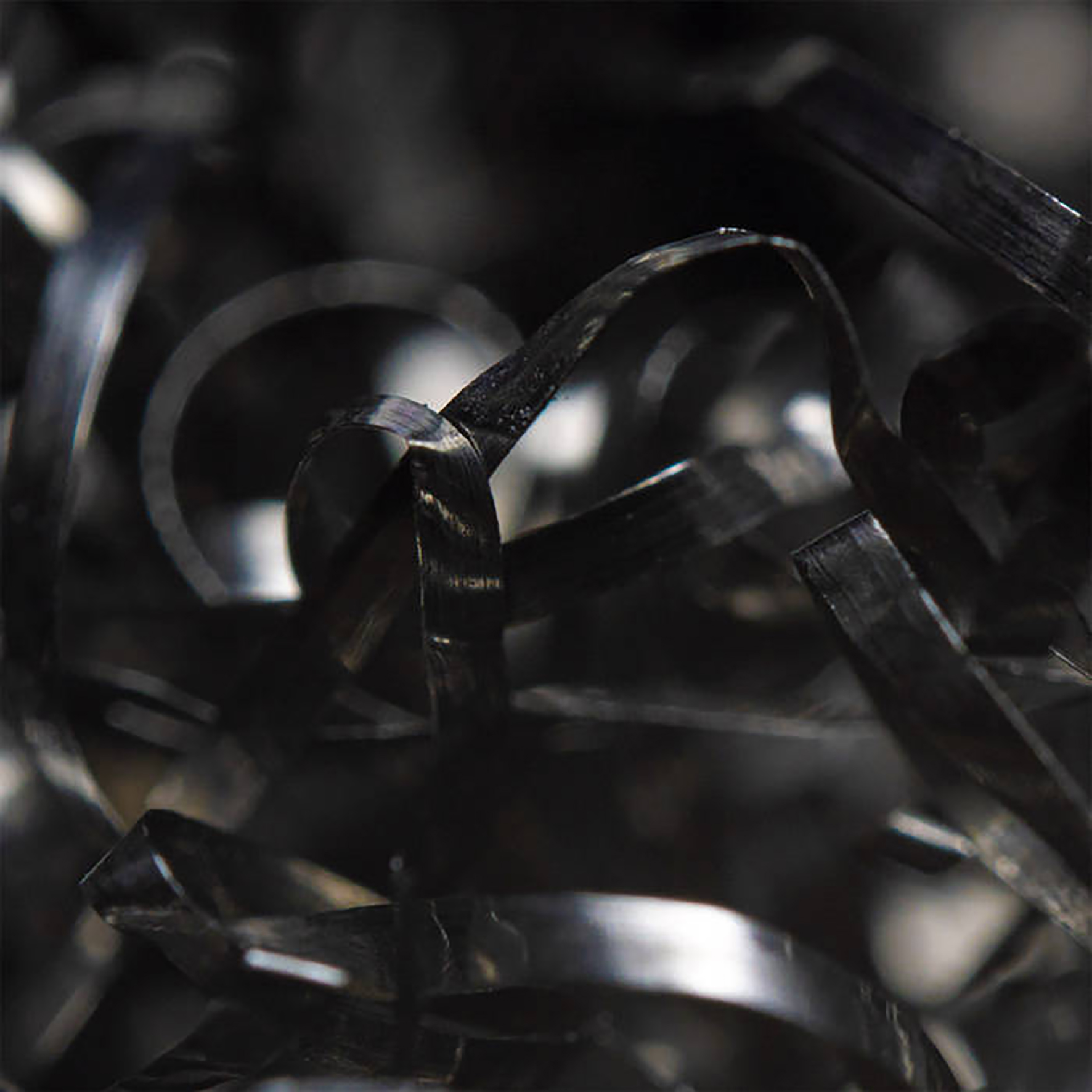 This is my first encounter with the unique fare of Berlin's One Instrument Records, but I have probably stumbled upon Felicity Mangan's work before, as she released an EP of animal-sourced sound art on Longform Editions back in 2019 and she is also half of the duo Native Instrument.  While it may sound like a stretch to call the multi-directional "quasi-bioacoustic sound piece" of her Longform EP Stereo'frog'ic "normal," it is nevertheless fair to say that frogs and homemade speakers are considerably closer to Mangan's comfort zone than a harmonica album (which is good, as I generally loathe harmonicas). And yet here we are: Bell Metal Reeds is an entirely harmonica-sourced album (Mangan picked one up at a flea market in Hamburg right before the pandemic). In most cases, learning that someone recorded a solo harmonica album over lockdown would—at best—elicit a wince, heavy sigh, or torrent of expletives from me, yet Mangan has somehow managed to wield the instrument so unconventionally and so beautifully that my mind has been properly blown. This is an incredible album, at times recalling everything from classic Kranky fare a la Windy & Carl to Neu! to Chris Watson.
This is my first encounter with the unique fare of Berlin's One Instrument Records, but I have probably stumbled upon Felicity Mangan's work before, as she released an EP of animal-sourced sound art on Longform Editions back in 2019 and she is also half of the duo Native Instrument.  While it may sound like a stretch to call the multi-directional "quasi-bioacoustic sound piece" of her Longform EP Stereo'frog'ic "normal," it is nevertheless fair to say that frogs and homemade speakers are considerably closer to Mangan's comfort zone than a harmonica album (which is good, as I generally loathe harmonicas). And yet here we are: Bell Metal Reeds is an entirely harmonica-sourced album (Mangan picked one up at a flea market in Hamburg right before the pandemic). In most cases, learning that someone recorded a solo harmonica album over lockdown would—at best—elicit a wince, heavy sigh, or torrent of expletives from me, yet Mangan has somehow managed to wield the instrument so unconventionally and so beautifully that my mind has been properly blown. This is an incredible album, at times recalling everything from classic Kranky fare a la Windy & Carl to Neu! to Chris Watson. On his first solo album since 2015, Duane Pitre takes figures/motifs from a "justly tuned" piano and uses his Max/MSP-based generative network to convert them into data which is then sent to two polyphonic microtonal synthesizers which have patches he designed. There is also some controlled improvisation interacting with the piano-reactive electronics. That may be clear to many readers, but it is impressively baffling to me. No matter, I often enjoy the benefits of things I don't fully understand: hydroelectric power, photography, bees making honey, and sound "living in the grooves" of vinyl records, to name but four. So it is with this lovely series of degenerative musical feedback loops. They also have a consistently pleasing sound and invite inner contemplation and a sense of interconnectedness.
On his first solo album since 2015, Duane Pitre takes figures/motifs from a "justly tuned" piano and uses his Max/MSP-based generative network to convert them into data which is then sent to two polyphonic microtonal synthesizers which have patches he designed. There is also some controlled improvisation interacting with the piano-reactive electronics. That may be clear to many readers, but it is impressively baffling to me. No matter, I often enjoy the benefits of things I don't fully understand: hydroelectric power, photography, bees making honey, and sound "living in the grooves" of vinyl records, to name but four. So it is with this lovely series of degenerative musical feedback loops. They also have a consistently pleasing sound and invite inner contemplation and a sense of interconnectedness. This offering on the altar of music is a mesmeric slow burner. It goes to work on me like a time released medication. Strains of flute, bells, and synthesizer swirls gradually encompass me, infecting my blood stream with their calmness, before the levels are elevated into a heady pulsating crispness. Temple Music is an offshoot project started by Alan Trench of the British dark folk band Orchis and an ex-proprietor of the now deceased World Serpent label. After his first Temple Music release he was joined by Stephen Robinson. Together, on this limited release of 300, (distributed by
This offering on the altar of music is a mesmeric slow burner. It goes to work on me like a time released medication. Strains of flute, bells, and synthesizer swirls gradually encompass me, infecting my blood stream with their calmness, before the levels are elevated into a heady pulsating crispness. Temple Music is an offshoot project started by Alan Trench of the British dark folk band Orchis and an ex-proprietor of the now deceased World Serpent label. After his first Temple Music release he was joined by Stephen Robinson. Together, on this limited release of 300, (distributed by 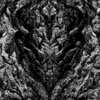 From the album art and band title, I was expecting something more black metal-ly than I got with this album, which is a good thing. Considering this duo's first album was titled This Beat Is Necrotronic, I should have guessed that they weren't going to be playing by genre rules, and here the occasional bit of fuzzed out kvlt guitar is mostly balanced by dubby beats and textural synths, channeling the mid/late '90s ambient dub scene with distinctly current approach.
From the album art and band title, I was expecting something more black metal-ly than I got with this album, which is a good thing. Considering this duo's first album was titled This Beat Is Necrotronic, I should have guessed that they weren't going to be playing by genre rules, and here the occasional bit of fuzzed out kvlt guitar is mostly balanced by dubby beats and textural synths, channeling the mid/late '90s ambient dub scene with distinctly current approach.
